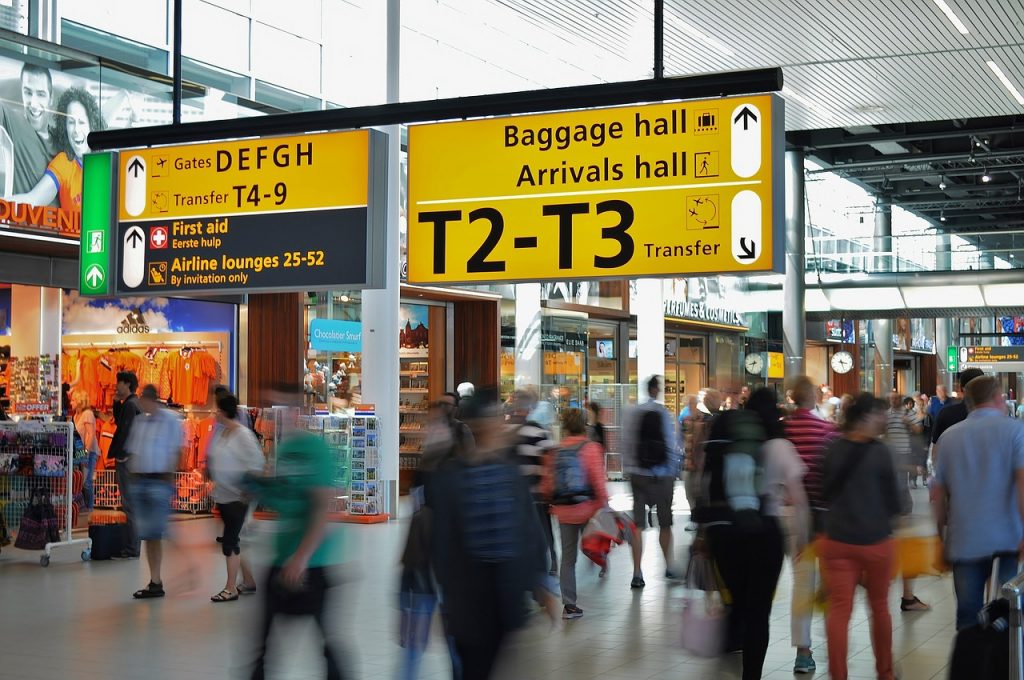Airlines Finally Have A Solution To Alleviate Crowded Airports
Airlines are using bigger planes in an attempt to combat airport overcrowding.
This article is more than 2 years old

Recently, there have been many flight disruptions for a variety of reasons. Now airlines are turning to bigger planes to combat the issue of overcrowded airports, flight costs, and the pilot shortage. Airports are also looking to cut flights and relocate them from busy airports to combat these issues.
It’s no surprise that airports around the world are becoming increasingly congested. Airlines are seeing limited runway capacity and high passenger volumes leading to delays, increased operating costs, and reduced customer satisfaction. In fact, ValuePenguin reported that early last year more than 1 in 5 domestic flights were delayed.
These problems pose a significant problem for airlines because they rely on efficient and timely operations to maintain profitability. In the past, airlines have implemented various measures to address airport congestion. Scheduling flights during off-peak hours, utilizing regional airports, improving air traffic control systems, and encouraging passengers to use self-service technologies are all recent examples.
Now airlines are turning toward bigger planes to increase capacity and efficiency. This is expected to reduce operating costs per passenger. The intended reason for this is to address the number of planes an airline operates out of any particular airport.
Using bigger planes do have logistical challenges, such as finding appropriate gates and terminals that can accommodate these types of aircraft. However it seems that these logistical issues are amplified if an airline maintains multiple smaller planes. Another drawback is that bigger planes might not be suitable for all routes or markets, particularly those with lower demand or shorter distances.
According to CNBC News, Rodney Cox, United Airlines’ vice president of airport operations at Newark Liberty International Airport, said it’s difficult to increase the number of flights operated in and out of the airport. Considering how it’s one of the nation’s most congested airports, the solution should not be to increase or solely cut flights. That is where adding more seats in flights comes in, termed “upgauging” in the industry.
Some of the most affordable airlines have bigger planes available, meaning more seats. According to a graph from CNBC News, out of the 11 biggest U.S. airlines, Spirit, Frontier, and Sun Country Airlines have the highest average number of seats per domestic flight in the U.S. While Delta, United, and American Airlines have the fewest average number of seats per domestic flight on U.S. airlines
All three of the airlines with more seats are known for their affordability when it comes to booking flights. However, American Airlines, with an average of 118 seats per U.S. flight, has one of the highest number of cancellations, according to Reuters. According to trends, it can be expected that Delta, American, and United Airlines will continue to add capacity.
Another reason airlines have taken to upgauging is to address the pilot shortage. CNBC News reports that the current shortage is one of the worst because of long-term industry effects as well as the pandemic. Therefore, with bigger planes one pilot can fly more people per route and less time taxiing due to limited airport gates.
The alternative to bigger planes seems to be less flights. The Federal Aviation Administration allowed airlines to cut flights at major airports to avoid disruptions last month according to CNBC. Whether or not increased seating capacity will have the intended effect to curtail delays and cancellations as well as address congestion is yet to be seen.




![[Photos] The Evolution Of The Volkswagen Beetle](https://www.tellmebest.com/wp-content/uploads/2021/07/cropped-tell-me-best-fav-s.png)